You had me at DR. This was my first introduction to JetStream Software and they have done a great job of nailing the story of the VMware disaster recovery challenge. How can you get extremely low RTO and RPO without risking performance or cost?
Optimizing VMware DR
JetStream is purely focused on the VMware ecosystem. They’ve clearly gone as deep as they could with using the ideal low-level interactions in vSphere and vCenter to optimize for performance.
The architecture includes Managment Server appliance, IO filters, DR Replication Virtual Appliance (DRVA), and object storage. Using the IO filter drivers with the capabilities of VAIO for deep VMware integration gives the ideal control point.
The scenario we walk thorough in the presentation showed a net new AVS (Azure VMware Solution) that you can stand up on-demand. JetStream backs up the VMware VMs to Azure blob storage which contains the disk images and metadata. Recovery just requires you to configure the recovery virtual appliance and recover to the alternate environment.
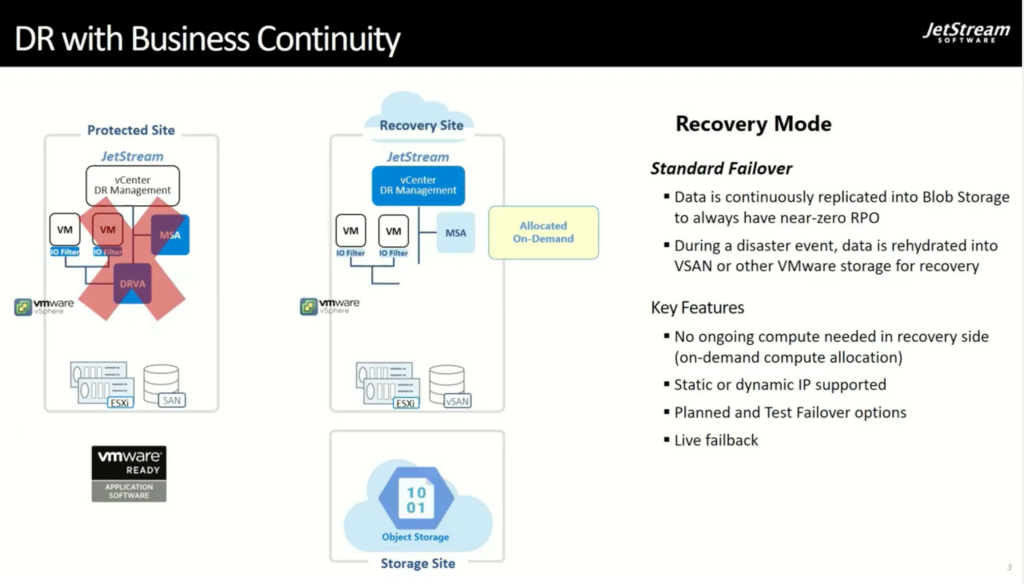
That’s a nifty design, but the challenge comes when you need it fast. That’s where we switch gears to look at JetStream in a
Near-Zero Recovery Time Objective (RTO)
The same platform also does near-zero RTO using what they call continuous failover. The target machines are already hydrated and ready to do the final touches to activate and register in vCenter.
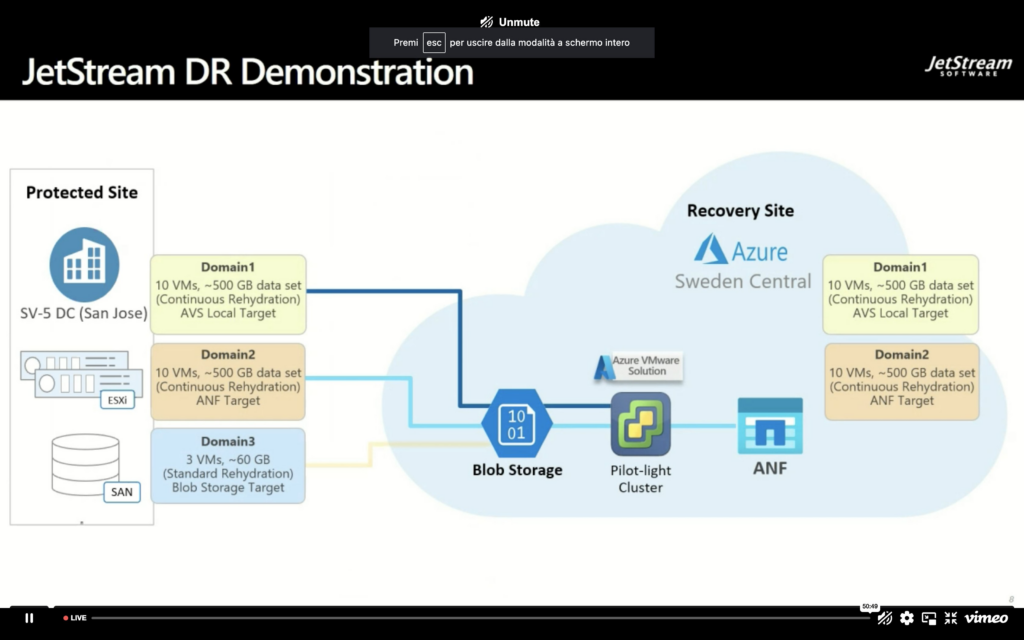
Recovery Processes include pre-scripts, boot order, post-scripts, and lots of configuration options. You can create runbooks for the recovery sequences which can be initiated manually, on a schedule, or will run in the event that they are automated in the case of a loss of the primary site.
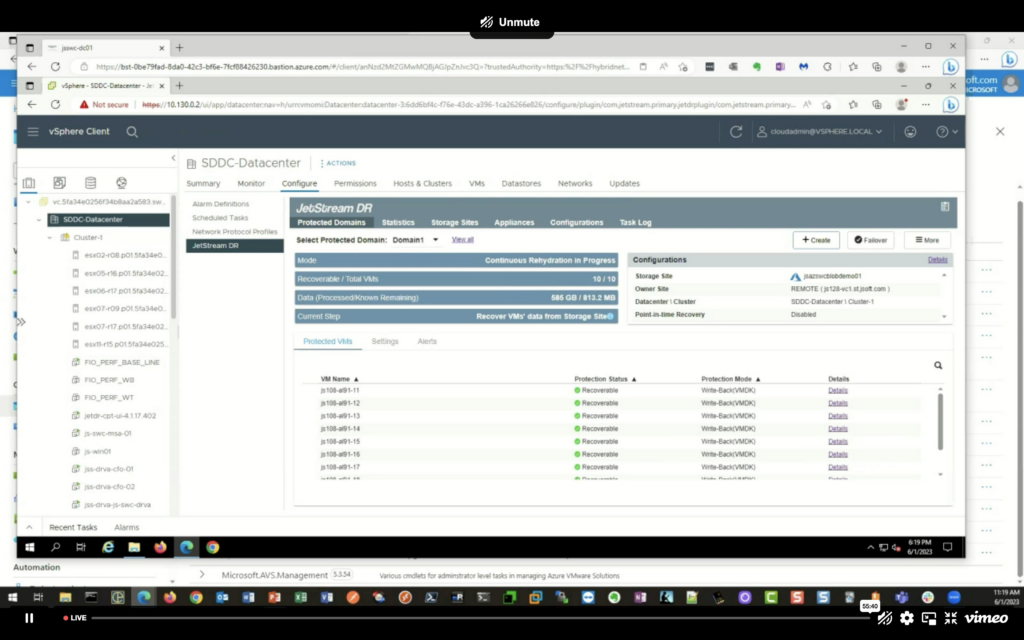
One of the runbook features is also that you elect a recovery site protection target as part of the configuration. This is so you failover to the recovery site and your environment immediately begins to protect itself again to an alternate site so you are still protected.
Azure VMware Solution
It was also a bonus to have Microsoft join the presentation to talk about how the Azure VMware Solutions (AVS) can be used. This is both in general and for the purpose of recovery. VMware on public cloud has been surprisingly popular. It’s likely because of how difficult it can be to refactor and rewrite applications for native cloud platforms.
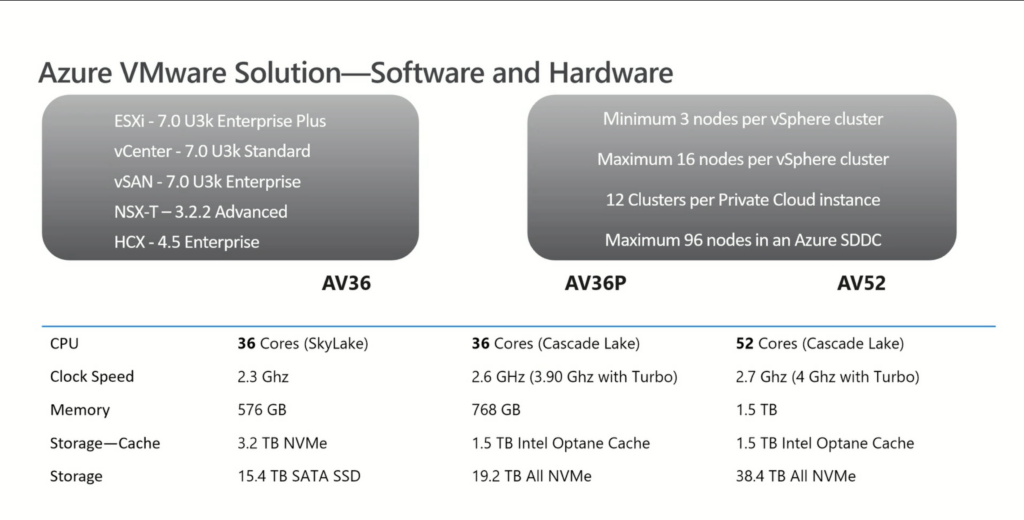
It will be interesting to see how the long-term roadmap looks for the Azure VMware Solution product line. There are some obvious use-cases where this is a positive option.

AVS also requires looking at your core requirements and understanding the impact for operational cost and how much you want to have running at an ongoing per-hour cost for near-zero RTO versus cold images waiting for hydration.
Azure VMware Solution with Azure NetApp Files
We took the demo design one step further by adding a partner storage platform into the mix. NetApp is partnered with Microsoft with their Azure NetApp Files (ANF) offering. It’s the NetApp ONTAP volumes running on Azure as a 1st part volume solution.
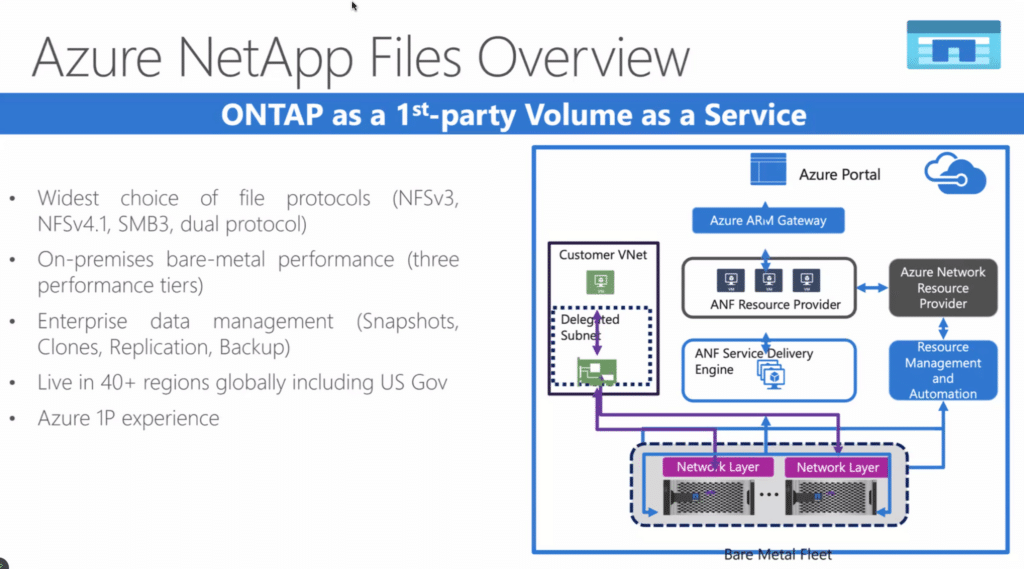
For anyone who is already working with NetApp, this is a fantastic way to have much more control and visibility into your storage on Azure and elsewhere in a NetApp-centric environment. VMware is fully supported on ANF for most VMware workloads. That’s just the beginning because NetApp also has some enhanced features to provide hosting for HPC, SAP HANA, VDI, and other Azure Platform Services (e.g. AKS, Azure Batch, Azure Machine Learning).
ANF also has extended capabilities around scalability, data and object management (e.g. snapshots, cloning, checkpoints).
My Thoughts on JetStream Software
Disaster recovery is near and dear to me. The way that JetStream is tackling the core issues that DR folks face is compelling and they seem to have done some really good UX research in the way the UI walks you through configuration for protection and recovery.
I like the programmability of the platform. It would be great to see more around the orchestrated recovery and some visual runbook visualizations.
JetStream for VMware is definitely worth a loo
About JetStream Software
JetStream’s mission is to make Cloud-Native Continuous Data Protection available to all.
JetStream Software was founded on the insight that Data Protection and Disaster Recovery in the Cloud would be incredibly complex and expensive. Traditional solutions are not able to meet Recovery Point Objective (RPO) and Recovery Time Objective (RTO) requirements for today’s mission critical applications.
JetStream Software website: https://www.jetstreamsoft.com/
JetStream Software on Crunchbase: https://www.crunchbase.com/organization/jetstream-software
JetStream Software on Partnerbase: https://www.partnerbase.com/jetstream-software
JetStream Software on Owler: https://www.owler.com/company/jetstreamsoft
Disclosure
Travel and expenses for Tech Field Day – Cloud Field Day 17 were provided by the Tech Field Day organization, GestaltIT. No compensation was received for attending the event. All content provided in my posts is of my own opinion based on independent research and information gathered during the sessions.
